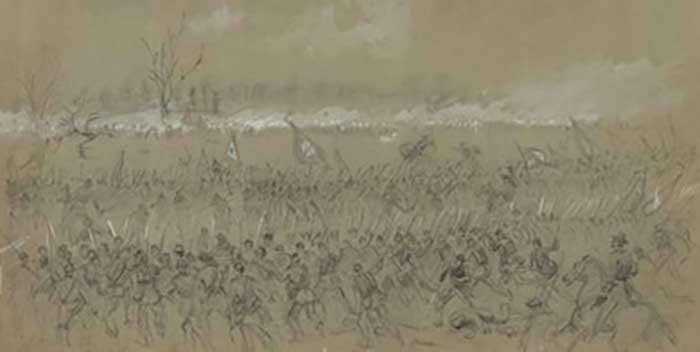Waterloo of the Confederacy
By April 1, 1865, the Union’s Army of the Potomac and the Army of the James had been fighting and draining away the strength of the Confederate Army of Northern Virginia around the trenches of Petersburg, Virginia for nine months. Lt. Gen. U.S. Grant’s plan had been simple: use his superior numbers to stretch the Confederate lines ever thinner by slowly sliding westward in an attempt to cut their last Confederate supply line: the Southside Railroad.

Major General George Pickett
For a new offensive against the western Confederate flank Grant utilized 22,000 men from Major General Phil Sheridan’s Cavalry Corps and the Army of the Potomac’s 5th Corps under command of General Gouverneur K. Warren. Their assignment was to capture the important road junction of Five Forks.

General Gouverneur K. Warren
Overall command of the operation was given to Sheridan, and he was facing approximately 10,600 Confederates under the overall command of Major General George Pickett. Sheridan’s plan was to have his cavalry hold the Confederates’ attention on their front while the 5th Corps attacked the their left and rear.

Major General Phil Sheridan
As April 1 wore on and no Union attack materialized, Pickett and several of his officers attended a shad bake to the rear of the Confederate lines. Suddenly at around 4:00 PM, the Union attacked. As Sheridan’s cavalry attacked Pickett’s lines, the 5th Corps hit the Confederate left flank like a sledgehammer. Lacking overall direction, the Confederate forces buckled then broke. The critical crossroads of Five Forks was firmly in Union hands. Lee was forced to evacuate Petersburg and Richmond, and he surrendered to Grant eight days later at Appomattox Court House.

Sketch by Alfred Waud, “Last Stand of Pickett’s Men”, Courtesy of Library of Congress
Discover more about the rich history of the Civil War and explore our museum’s exhibits further by visiting our home page here.
